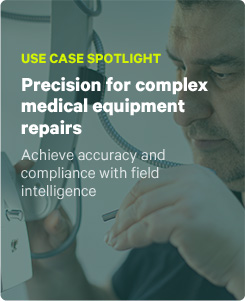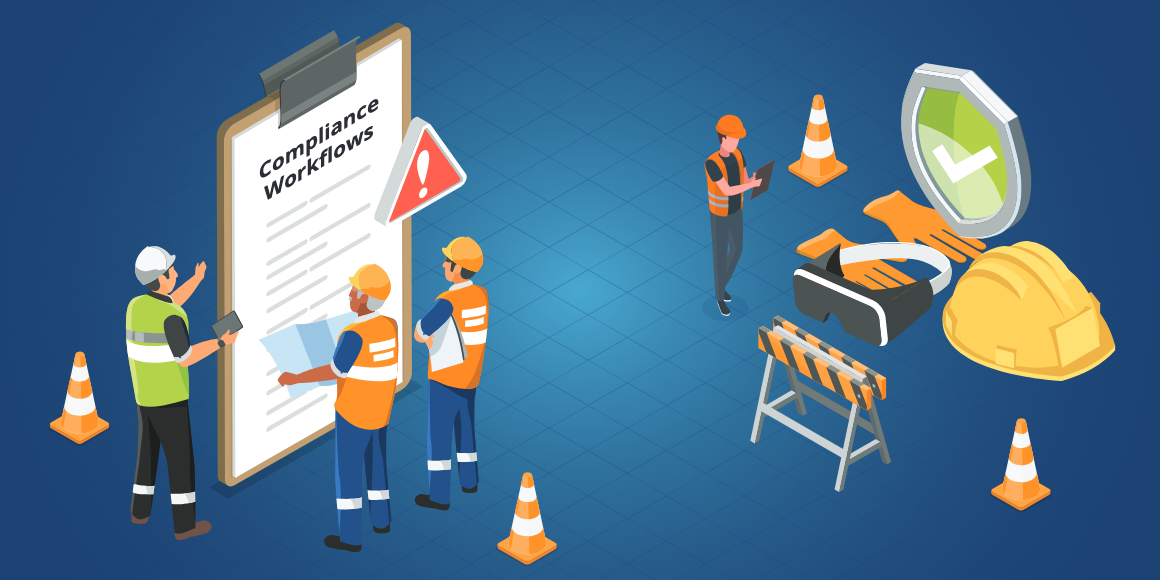In industries governed by rigorous compliance standards, the line between operational success and catastrophic failure often lies in how well you document the details. For field operations in life sciences, energy, aviation, or medical devices, regulatory scrutiny is constant and unforgiving. It’s not just about doing the job right. It’s about proving, in irrefutable detail, that it was done right, by the right person, under the right conditions.
And yet, many organizations are still relying on simple digital (or paper) forms to meet those complex requirements. It’s a risky move. Because when compliance becomes a box to tick instead of a framework to embed, the consequences can range from failed audits to halted production lines to multi-million-dollar fines.
The truth is that compliance in field operations isn’t a documentation issue. It’s a structural process problem. And solving it requires more than a form, paper or otherwise. It demands a fully integrated, audit-ready platform that enforces procedures, validates data, and ensures traceability every step of the way.
The Illusion of Safety in Standard Digital Forms
Many teams turn to off-the-shelf digital form tools as a first step in modernizing paper-based processes. It’s easy to see the appeal. Replace clipboards with tablets, move files to the cloud, and call it digital transformation or at least a step in that direction.
But this surface-level change only creates the illusion of safety, making field service organizations even more vulnerable than if they had never started. While forms can collect data, they don’t enforce whether that data was captured following the correct procedures. They can’t ensure that the technician was certified, that the process was followed exactly, or that the right version of a procedure was used. They can’t prevent someone from skipping steps or inputting information that doesn’t meet regulatory requirements.
This leaves organizations exposed. A missed field here, a skipped verification step there. Suddenly, the audit trail collapses. Regulators won’t be satisfied with “We filled out the form.” They’ll want to know: Was the right process followed, every time, with proof?
Spotty Documentation Puts the Entire Business at Risk
When compliance is treated as an afterthought, the gaps don’t stay hidden for long. A single incomplete record can raise red flags during an inspection. A pattern of inconsistencies can lead to regulatory penalties, recalls, or a halt in operations.
In the most severe cases, especially in sectors like medical or aerospace, the consequences can escalate from financial to existential. Entire product lines, customer contracts, or licenses to operate can be threatened by audit failures stemming from incomplete or untraceable documentation.
The stakes are too high to relegate this process to just forms. What regulated industries need is a system that ensures the information is accurate, complete, and collected in accordance with standard operating procedures every single time.
Compliance is a Workflow Problem
Real compliance doesn’t live in the form. On the contrary, it lives in the workflow. What matters more is how the information is gathered, not just what is gathered.
That’s where platforms like TrueContext shine. We don’t just convert paper forms to a mobile app, we digitize procedures. That means embedding standard operating procedures directly into the field process as workflow guardrails that must be observed under all circumstances. It ensures that every step is completed in order, every critical field is captured, and every deviation is tracked.
Workflows are configured to mirror regulatory expectations. They incorporate required fields, conditional logic, approval processes, and version control, making it nearly impossible to complete a task without meeting compliance requirements. It’s weaving compliance into every workflow and every job that your team does.
In effect, the system becomes a compliance enforcer rather than a process recorder. Field teams can’t submit incomplete or non-compliant reports because the workflow itself won’t allow it. This creates a layer of operational discipline that basic form tools simply can’t offer. It eliminates pencil-whipping, as we heard from our customer Calvin Hunter over at Vipond.
Proactive Audit Readiness: Always Ready, Never Scrambling
In traditional setups, audits are disruptive. Teams scramble to assemble scattered documentation from multiple sources: files, emails, spreadsheets, or individual devices. It’s inefficient and opens you up to unnecessary risk. The longer it takes to produce complete records, the more scrutiny you invite. True audit readiness isn’t reactive. It’s baked into how you operate every day.
When workflows are fully digital and embedded with compliance logic, documentation is created as a natural byproduct of doing the work. Each completed process is time-stamped, user-authenticated, and stored securely, with every field validated against predefined rules.
Instead of digging through folders, managers can instantly generate reports that show not just what was done, but that it was done correctly. You can trace every decision back to a person, a timestamp, a GPS location, and a version-controlled process.
One often overlooked benefit of embedded compliance workflows is the ability to conduct robust internal audits without disrupting daily operations. With traditional setups, internal audits require pulling samples manually, digging through spreadsheets, or requesting documents from different teams. It’s slow, error-prone, and reactive.
But with structured data captured through smart workflows, compliance teams can review trends across the entire operation in real time. They can identify high-risk activities, recurring deviations, or underperforming sites. Corrective actions can be implemented quickly to proactively prevent regulatory audits from happening in the first place.
Workflows That Eliminate Ambiguity
One of the most dangerous compliance gaps is ambiguity. When teams rely on memory, interpretation, or tribal knowledge to execute tasks, inconsistency is inevitable. And inconsistency is what keeps compliance officers up at night.
Digitally enforced workflows eliminate that ambiguity. The process is spelled out, step by step, and governed by built-in logic that adapts to the situation. If a certain reading is out of range, follow-up steps are automatically triggered. If a prerequisite isn’t met, the process can’t proceed.
This isn’t about policing workers but about protecting them. Field techs are often under time pressure and navigating complex environments. Giving them a clear, structured, and responsive guide reduces mistakes, improves confidence, and ensures that the organization as a whole stays in compliance.
The Future of Compliance is Built-In, Not Bolted On
The difference between a basic form tool and a compliance-grade platform isn’t cosmetic — it goes down to the very root. It’s the difference between hoping your team followed the right procedure and knowing they did.
In an environment where expectations and risks are multiplying, field teams need technology that doesn’t just record the work—they need tools that guide, verify, and enforce the right way to do the work. That’s what a modern compliance tech stack delivers. And it’s what organizations need to scale operations with confidence.




